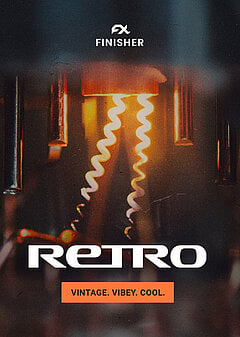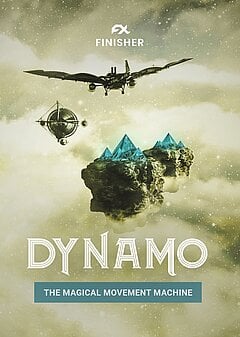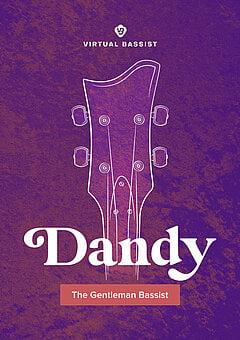The Ultimate Guide to LoFi Hip Hop
How to create the perfect chillout music from scratch with an authentic retro vibe (no hardware required)
JANUARY 16TH, 2022
From "Beats to relax to" Youtube livestreams to carefully curated Spotify playlists, LoFi hip hop has grown into a massive sub-genre for todays beat producers. This guide covers all you need to know if you want to create authentic LoFi beats yourself, including some examples and specific tools to add to your arsenal.
Creating the perfect vibe
If you’ve spent any amount of time listening to LoFi as many people have, it’s immediately obvious that the entire genre is designed to be chill and laid-back. How to actually achieve that feeling is another matter entirely, and can be surprisingly difficult to get right if you’re used to producing more up-tempo music. To set the stage for everything you’re about to create, try starting with the beat and laying down a skeleton rhythm — then you can build up from there safely, knowing that it will be much harder to lose the core beat along the way (you’ll find more details on this in the “Beat and rhythm” section below).
From there, start laying down the backing chords using your own inspiration or any found samples you want to use (just be sure to do so legally and with the proper attribution if you go this route). While there are no progressions in the same sense as pop music’s ubiquitous I - V - VImin - IV, you’ll likely find it easier to write in a minor key since major keys tend to convey more energy — with LoFi, it’s a safer bet to dial things down! Chop up, reverse and re-order parts of the song as you choose, and the overall vibe will come together quickly. Even more so than other genres, LoFi is about taking away everything you don’t need, rather than constantly adding more.
Production techniques
To start with, low pass filtering will be your best friend — a large part of LoFi’s chill vibe is due to the lack of much high frequency content. It’s naturally less intense as there’s less energy in the frequency spectrum, which you can hear in everything from the drum beat to the cut-up sampled loops in the background. While you shouldn’t filter indiscriminately, a healthy roll-off on the high will go a long way to creating proper LoFi. You’ll want a touch of saturation as well, though the type you use matters greatly since the goal is more of a retro feel ... which Finisher RETRO (aptly named) is specifically designed for and is extremely versatile in the realm of LoFi.
If you enjoy sidechain compression, you’ll feel right at home here; take the entire mix and route it through a single track, and chain everything off of the kick drum (possibly the snare as well, but test this to see whether you like the effect. In most cases, you’ll want to hear a drop to complete silence and then have it rapidly bounce back to normal on every trigger. Traditionally, sidechaining is used to keep the bass out of the kick drum’s way when they occupy conflicting frequency ranges; it creates extra space to keep the beat consistent and punchy. However, in this case you can make the effect as dramatic as you want — think of this as more of a rhythmic device than a mixing one!
A nice touch you might consider adding is a dramatic pitch and volume flux. This is essentially a recreation of the “wow” and “flutter” associated with magnetic tape but dialed up to 11, giving the impression that the backing loop was recorded from a degraded, long-lost recording (which is a big part of the genre’s sound). Listen to the opening of Hitchhikers by Jordy Chandra and S N U G and this will quickly become clear. You can achieve this effect with Finisher DYNAMO, which offers you a range of different volume and pitch effects to reshape any audio in countless different ways.
Essential LoFi instruments
Electric guitar and electric piano are staples in LoFi, so it helps to have some good sample libraries for both: Virtual Guitarist SPARKLE will often do the trick (especially when accompanied by Finisher VOODOO), and on the electric piano side, Scarbee Vintage Keys is a classic example that still holds up very well. A lot of LoFi uses pre-recorded guitar loops, though if you want more of a live touch (and aren’t a guitarist yourself), you can achieve a similar effect by adding some patterns from SPARKLE, rendering the audio, cutting it in short segments and playing them out of order. The result will sound glitchy, which if done with care will make it sound more intimate and give it something of a ‘live’ feel.
For bass, electric bass guitar is best, not synth bass; you want everything to feel organic, and anything with a linear, unnatural decay to the tail of each note will stick out as synthetic. Virtual Bassist DANDY is a fantastic stand-in for a live player, and its laid-back sound fits seamlessly into the world of LoFi. There are tons of premade MIDI loops you can easily modify on the fly, though you can get as creative as you like — just don’t make the bass line too busy, as this is an easy way to disrupt the vibe you’re going for.
Lastly, the drum kit — this takes some finessing, as it should sound somewhere between an acoustic kit and an electric one. Deep sampling like you might find in a sample library (multiple samples and velocity layers per note) is unnecessary, since you want to use ‘acoustic’-sounding drum samples played like a classic drum machine. Experiment with pushing the in-between notes slightly off the grid so that only the kick and snare are perfectly in time; this will increase the organic feel, making it feel as though there’s a live drummer behind the beat ... but your loops should repeat exactly so that they sound just a little too perfect. Play with this balance, and eventually you’ll find a perfect in-between you could groove to for hours!
This is a perfect segue into exactly how to construct your beats...
LoFi beat patterns and rhythm
While you’ll find tons of different base rhythms to build on, there’s one that will almost never fail: kick on 1, snare on 2 and 4. The absence of the kick on beat 3 creates space in the middle of each measure and removes most of the beat’s drive, which is a neat trick when your goal is to keep things as laid-back as possible. Once you set up this base rhythm, the fun starts as you decide how to fill in the space between.
Chances are, you’ll want a few more kick and snare hits in between notes, usually at a reduced volume to mimic the “ghost note” feel of jazz drummers. This can be as simple as a short kick note right before some the snare hits (vary this slightly between measures, those little differences add up quite nicely), but you can also have a lot of fun with complex kick and snare syncopations where you add multiple drum hits in between, all off the grid to destabilize the beat and make it feel less linear. This is easier to understand once you hear it in action, and fruity stylesby Hicut Lopass is a great example.
Hi hats are also a huge component of LoFi hip hop, but this is one area in which you don’t need to skew too analog — you can get away with clearly electronic hi hats in conjunction with acoustic kick and snare while still being okay. In fact, some LoFi songs have trap-inspired beats with hi hat rolls, just used in a much more relaxed manner, like in the song Wonderful Dayby Tundra Beats. Even though the beat is very active, it never stops feeling laid back; this is what you should aim for as you experiment and add more to your LoFi beats. Always be mindful not to make the rhythm too busy!
Now, while you can achieve all of this with a drum rack or any sort of electronic percussion plugin, there’s a much faster way that offers all the nuances you’re looking for without requiring a ton of manual timing adjustments, without using loops: UJAM’s Beatmaker DOPE, which is designed for hip hop and is easy to integrate into LoFi with a little love from Finisher RETRO.
Wrapping up
LoFi is a simple genre on the surface, but the main challenge lies in building out a full song without being tempted to add more and more. Purposely reeling some of your creative instincts back in will become necessary if you enjoy high-tempo music as well ... the two don’t mix very well.
Getting into a groove and getting comfortable within it is critical, and there’s an easy way to make this automatic: create a 4- or 8-bar loop and keep it on repeat while you work, at least until you have most of the instruments in place. If you prefer to write isolated from the beat, this might be difficult for you; however, it’s well worth it. It’s all too easy to go off on a musical tangent, only to come back to the song and realize what you just wrote is entirely unusable in the context of the song!
Lay down a basic beat you’re comfortable with, build it up from there, and fill in the remaining elements until you have a first draft you’re happy with; then, simply add and cut as needed until everything remaining has its own perfect place in the mix ... soon, you’ll be making perfect chill-out LoFi hip hop in no time!
About the Author
Harry Lodes is a copywriter, marketing consultant and content writer for audio and ecommerce brands. He lives in the Philadelphia area, releasing Eastern/Western hybrid EDM under the artist name KAIRI hearkening back to his roots in Berklee College of Music.
Stay up to date
Sign up and we’ll send you an e-mail with product news and helpful stuff every now and then. You may unsubscribe at any time.
Defy Limits
We develop software solutions that enable people to create, consume and interact with music.




